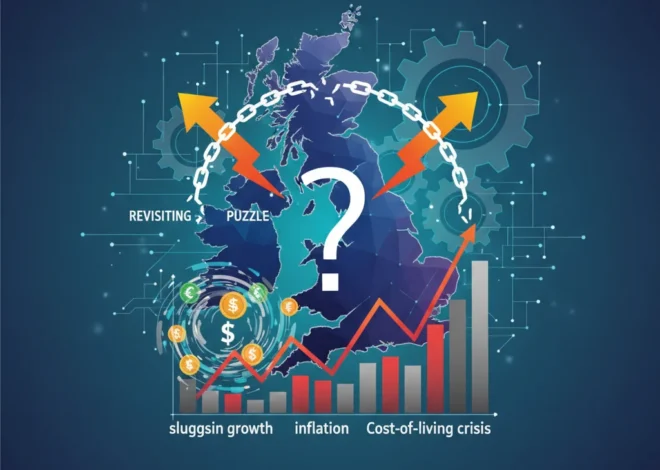
Beyond the Headlines: Decoding the £22 Energy Bill Drop and Its Ripple Effect on the UK Economy
In the world of finance and economics, seemingly minor data points can often signal significant underlying shifts. The recent forecast from the highly respected energy analyst firm, Cornwall Insight, is a prime example. They predict the typical UK household energy bill will see a modest fall of £22 in the new year, bringing the annual total to £1,733 starting in January. While a £22 saving might not feel like a lottery win, its implications reverberate far beyond the individual household budget, touching everything from national inflation rates to stock market performance and the strategic decisions of business leaders.
This subtle adjustment is more than just a headline; it’s a barometer of the global energy landscape, a crucial input for the Bank of England’s monetary policy, and a key indicator for investors trying to navigate an uncertain economic climate. To truly understand its importance, we must look beyond the number and analyze the complex interplay of factors driving this change and the cascading effects it will have on the broader UK economy.
Understanding the Mechanism: The Energy Price Cap in Context
Before diving into the macroeconomic consequences, it’s essential to understand the mechanism at play: the Ofgem energy price cap. Introduced in 2019, the price cap doesn’t limit the total amount a household can be billed, but rather sets a maximum price that energy suppliers can charge per unit of gas and electricity, along with a maximum daily standing charge. It is reviewed quarterly by the UK’s energy regulator, Ofgem, to reflect changes in wholesale energy costs and other operational expenses.
The forecasts from analysts like Cornwall Insight are so influential because they provide an early, data-driven look at where this cap is likely to land. Their models analyze wholesale market trends, network costs, and policy changes to predict Ofgem’s next move. The recent period of extreme volatility has made these forecasts indispensable for government, businesses, and consumers alike. To appreciate the scale of the recent energy shock and the context for this minor relief, consider the price cap’s trajectory over the past few years.
The following table illustrates the dramatic fluctuations in the Ofgem price cap for a typical dual-fuel household paying by direct debit, highlighting the peak of the crisis and the subsequent stabilization at a new, higher plateau.
| Effective Period | Annual Price Cap Level |
|---|---|
| Oct 2021 – Mar 2022 | £1,277 |
| Apr 2022 – Sep 2022 | £1,971 |
| Oct 2022 – Dec 2022 | £2,500 (subsidised by EPG) |
| Jan 2023 – Mar 2023 | £4,279 (cap level, bill subsidised) |
| Jul 2023 – Sep 2023 | £2,074 |
| Oct 2023 – Dec 2023 | £1,834 |
| Jan 2024 – Mar 2024 (Forecast) | £1,733 |
Data sourced from Ofgem’s historical price cap levels and Cornwall Insight’s forecast. Note: Some 2022/23 figures reflect the cap level before government support under the Energy Price Guarantee (EPG).
This historical view demonstrates that while the predicted £22 drop is welcome, consumers are still facing bills significantly higher than pre-crisis levels. This “new normal” has profound implications for household disposable income and the wider economy.
The Stability Deficit: Why the UK's Constant Policy Tinkering is the Real Threat to its Economy
The Economic Levers: From Wholesale Gas to Monetary Policy
The primary driver behind the forecast reduction is the stabilization and decline of wholesale gas prices. After skyrocketing following Russia’s invasion of Ukraine and post-pandemic demand surges, European gas markets have found a new equilibrium. This is due to a combination of factors, including successful efforts to fill gas storage facilities across the continent, diversification of supply (particularly through Liquefied Natural Gas imports), and a mild start to the winter season. According to the UK government’s own data, wholesale prices have fallen significantly from their 2022 peaks, and this is now filtering through to the retail level via the price cap.
This is where the connection to the broader **economy** and **finance** becomes critical. Energy costs are a major component of the Consumer Price Index (CPI), the key measure of inflation. As energy bills fall, it exerts downward pressure on the headline inflation rate. This is music to the ears of the Bank of England’s Monetary Policy Committee, which has been aggressively raising interest rates to tame inflation. A sustained fall in energy prices could give the central bank the confidence that inflation is under control, potentially leading to a pause or even future cuts in interest rates. Such a move would have a massive impact on everything from mortgage rates and business loans to the valuation of the **stock market**.
Fintech’s Role in a Volatile World
The era of energy price volatility has underscored the need for more sophisticated financial management tools for both consumers and businesses. This is where **financial technology**, or **fintech**, is playing an increasingly vital role. For households, modern **banking** apps now offer advanced budgeting features, automatically categorizing spending and forecasting bill payments. Some even use AI to analyze spending patterns and suggest ways to save, which is invaluable when a major expense like energy is unpredictable.
In the corporate and **trading** world, the impact is even more profound. Fintech platforms are enabling more efficient energy hedging strategies for businesses, allowing them to lock in prices and mitigate risk. Furthermore, there is growing exploration into how emerging technologies like **blockchain** could revolutionize energy markets. A distributed ledger system could, in theory, enable secure and transparent peer-to-peer energy trading, where a household with solar panels could sell excess energy directly to a neighbour. While still in its nascent stages, the potential for blockchain to disintermediate traditional energy suppliers and create more resilient, decentralized grids is a fascinating area of innovation, directly linking advanced **fintech** concepts to real-world economic challenges.
The Hidden Inflation in Your Jewelry Box: How Record Gold Prices Are Redefining Luxury
Implications for Investing and Business Strategy
For the astute investor, this energy price forecast is a crucial piece of the puzzle for portfolio allocation in the coming year. Here’s how different sectors might be affected:
- Consumer Discretionary: Companies in retail, hospitality, and leisure could see a significant benefit. Lower energy bills, combined with the potential for lower interest rates, mean more disposable income in consumers’ pockets. This could translate directly into higher sales and improved stock performance.
- Energy Sector: While lower prices might seem negative for energy producers, the stability is a positive. It reduces the threat of further windfall taxes and allows for more predictable capital expenditure planning. The focus within the sector continues to shift towards renewables and energy efficiency technologies.
- Banking and Financial Services: A more stable economic outlook with falling inflation reduces the risk of loan defaults, both for mortgages and business loans. This improves the health of bank balance sheets.
Business leaders must also adapt their strategies. Financial planning can no longer treat energy as a minor, stable overhead. Companies must now actively manage their energy consumption and exposure to price fluctuations. This could involve investing in energy-efficient equipment, exploring on-site renewable generation, or using financial instruments to hedge costs. The current environment presents a compelling business case for sustainability, where reducing energy consumption is no longer just an environmental goal but a core financial imperative.
Beyond the Headlines: UK Unemployment Hits 3-Year High – What It Means for Your Finances
Conclusion: A Small Number with a Large Shadow
The forecasted £22 drop in annual energy bills is far more than a trivial saving. It is a reflection of a stabilizing global energy market and a powerful catalyst for change within the UK **economy**. It directly influences the nation’s fight against inflation, shapes the future of the Bank of England’s monetary policy, and subtly redirects the flow of capital across the **stock market**.
This single data point serves as a potent reminder of the interconnectedness of modern **finance**, where a shift in wholesale gas prices in Amsterdam can influence a household’s budget in Manchester and a portfolio manager’s decision in London. For individuals, investors, and business leaders, the message is clear: understanding the drivers and consequences of these subtle economic signals is the key to navigating the complexities of the financial landscape ahead.


